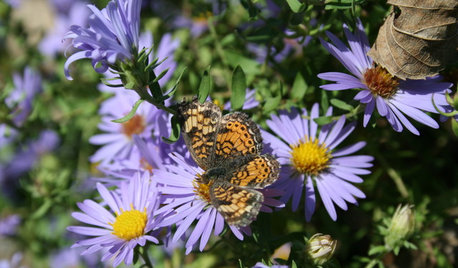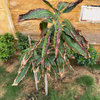Manually pollinating mangoes?
lycheeluva
14 years ago
Related Stories

GARDENING GUIDESAttract Hummingbirds and Bees With These Beautiful Summer Flowers
Roll out a welcome mat for pollinators to keep your landscape in balance and thriving
Full Story
FARM YOUR YARDIf You Have Room for Only One Fruit Tree ...
Juice up a small garden with one of these easier-care or worth-the-effort fruit trees for a mild climate
Full Story
GARDENING GUIDESWe Bust 4 More Native Plant Myths
Have you been taken in by these fallacies about gardening with native plants?
Full Story
DECORATING GUIDESPattern Focus: The Power of Paisley
Rockin’ it for nearly 2 millennia, paisley is keeping up with the ages
Full Story
GARDENING GUIDESMake Sure You Read This Before Buying New Plants
Follow these 10 plant-selection tips to avoid buyer’s remorse
Full Story

FRONT YARD IDEASBefore and After: Front Lawn to Prairie Garden
How they did it: Homeowners create a plan, stick to it and keep the neighbors (and wildlife) in mind
Full Story
LANDSCAPE DESIGN4 Tips for Creating a Small Garden That Welcomes Wildlife
Win over birds, bees, butterflies and neighbors with these design strategies
Full Story
LIFEHow Do You Make Your Tea and Coffee in the Morning?
A morning cup is a must for many, and preparation comes in many guises. We look at coffee and tea habits across the Houzz community
Full Story
GARDENING FOR BUTTERFLIES3 Ways Native Plants Make Gardening So Much Better
You probably know about the lower maintenance. But native plants' other benefits go far beyond a little less watering and weeding
Full StorySponsored




ohiojay
hmhausman
Related Discussions
Does Carrie Mango need cross pollination?
Q
Can fruit trees be manually pollinated?
Q
Manual pollination
Q
Manual Pollination 101
Q
ohiojay
lycheeluvaOriginal Author
ohiojay
hmhausman
lycheeluvaOriginal Author
hmhausman
lycheeluvaOriginal Author
ohiojay
ohiojay
hmhausman
lycheeluvaOriginal Author
ohiojay
lycheeluvaOriginal Author
hmhausman
lycheeluvaOriginal Author
lycheeluvaOriginal Author
Bradley Brown